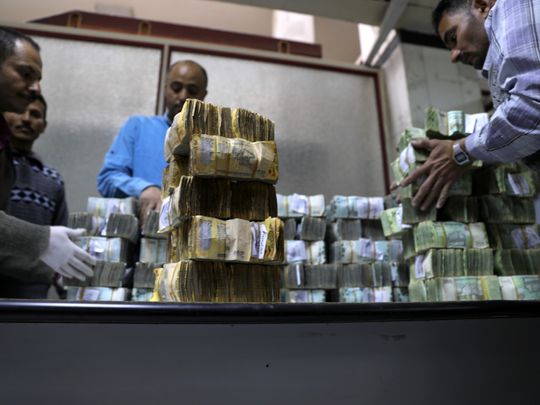
Sana’a/Aden: A battle over old and new banknotes in Yemen threatens to create two economies in the same state.
As of midnight, Al Houthi militia, which occupied the capital Sana’a, outlawed the use and possession of crisp new Yemeni riyal bills issued by the internationally recognised government based in the southern port town of Aden.
The Iran-allied Al Houthis say people should only use the old bills. They claim the ban is a “move against inflation” and what they call rampant money-printing by the government.
The government has branded the ban an act of economic vandalism. And the population, as ever, have been left stuck in the crossfire.
The ban has effectively created two currencies with diverging values, adding to the turmoil in the war torn country.
In the one-month build up to the ban, people in Al Houthi-controlled areas have been queuing to try to exchange their new riyal notes for old, turning the grubby and torn bills into a prized and relatively scarce commodity.
The riyal stood at about 560 to the dollar across Yemen before the ban was announced in mid-December. The rate has since slipped a little in Al Houthi-controlled areas to around 582, but slumped much further to 642 in the south, an area now awash with new bills.
That relative strength might look like a boon for northerners, if only they could get hold of enough of the old notes in time to keep afloat in the largely cash-based economy.
“We go for the exchange and they won’t take [the new notes] from us. Or say they need three, four or five days,” craftsman Abdullah Saleh Al Dahmasi said on a Sana’a street a week before the ban came into force.
“The new one isn’t accepted and the old one is worn out, they have to find a solution,” the 27-year-old said.
A few days before the ban came in, around 20 angry men and women were turned away from one exchange which said it had filled its quota for the day. Many had been coming there for three days in the hope of swapping their cash.
North-south trade has become far more expensive as traders have to buy and sell two types of riyal - told apart by the state of the paper and the different sizes and designs.
Things get more challenging when it comes to actual paper that can be spent in food markets. Sana’a residents said unofficial exchanges are offering to change 100,000 riyals of new notes into 90-96,000 riyals of the scarcer old.
The Aden authorities have said defended their decision to step up the printing of new money from 2017, saying it was an attempt to deal with a building cash crunch and pay public sector salaries.
“The Houthis ... did not consider the economic cost to society,” Yousef Saeed Ahmad, adviser to the governor of Aden’s central bank, told Reuters there this week.
“We hope the measures taken are short-term. They cannot be kept up because the economy is one, it is interrelated and commodities flow from Sana’a to Aden and vice versa. This measure will aggregate the living conditions of all Yemenis,” he said.












